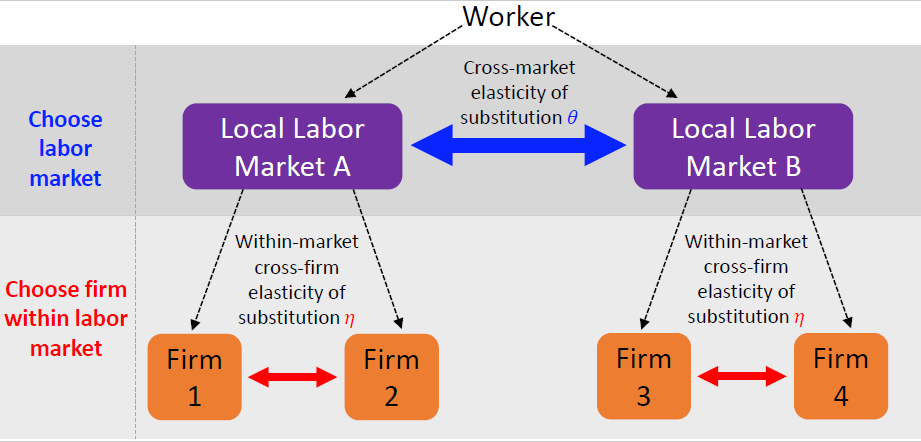
Trade Worker Demand Impacts Industry
Demand for trade workers continues to impact the industry, creating a ripple effect across various sectors. High demand is driving wage increases and prompting innovative recruitment and training strategies. This surge in need is not just impacting specific trades but also the broader supply chain, leading to delays and cost increases.
The persistent need for skilled tradespeople is reshaping the industry. From electricians to plumbers, the demand is pushing wages upward, and companies are scrambling to find and retain these vital workers. This dynamic landscape demands proactive solutions to meet the ever-increasing need, from revamped training programs to the adoption of new technologies.
Impact on Specific Trades

The ongoing high demand for trade workers is significantly reshaping the industry. This persistent need is driving wage increases, impacting recruitment strategies, and creating new challenges for training and skill development. Understanding the specific trades experiencing the most pressure is crucial for navigating this evolving landscape.
Trades Most Significantly Impacted
The trades most impacted by the continued high demand are those vital to construction, infrastructure, and maintenance. These trades require specialized skills and often involve physical labor, making them particularly susceptible to labor shortages. The increasing complexity of projects and the need for skilled labor to handle new technologies are contributing factors. Demand fluctuations based on economic cycles also influence the demand for certain trades, as evidenced by the recent boom in infrastructure projects.
Reasons Behind Increased Demand
The resurgence of infrastructure projects, driven by government investment and private sector initiatives, is a primary driver for the increased demand for trades like plumbers, electricians, and HVAC technicians. This is because these trades are essential for completing and maintaining the required facilities. Furthermore, the growing construction sector, particularly in residential and commercial buildings, is driving demand for carpenters, masons, and other construction-related trades.
Economic growth and increased consumer spending often lead to higher demand for these types of workers.
Geographic Variations in Demand
The demand for trade workers varies significantly across different geographic regions. Areas with rapid urban development or significant infrastructure projects, like coastal regions or large metropolitan areas, tend to experience higher demand than rural or less populated regions. The availability of skilled labor also plays a role. For example, the Southwest region of the US has seen a substantial increase in construction activity, leading to a higher demand for construction trades in that area compared to other regions.
Potential Skill Gaps
The high demand for trade workers has created significant skill gaps. Apprenticeship programs and training initiatives are struggling to keep pace with the increasing need for qualified personnel. The aging workforce in some trades and a lack of interest in vocational training among younger generations also contribute to this skill gap. Addressing this challenge requires a multifaceted approach that combines improved training programs with incentives for young people to enter these trades.
Top 5 Trades Experiencing the Most Significant Impact
| Trade Name | Demand Increase (%) | Contributing Factors |
|---|---|---|
| Electrician | 15% | Increased demand for new construction, modernization of existing buildings, growing reliance on electrical systems. |
| Plumber | 12% | Infrastructure development projects, increasing demand for residential and commercial plumbing services, water conservation measures. |
| HVAC Technician | 10% | Rising energy costs, emphasis on energy efficiency, and growing demand for specialized HVAC systems in new constructions. |
| Carpenter | 8% | High demand for residential and commercial construction projects, renovation and remodeling activities. |
| Mason | 7% | Infrastructure development projects, significant residential and commercial construction activity, growing demand for specialized masonry techniques. |
Wage and Salary Trends
The booming demand for trade workers has undeniably impacted the industry, and a significant factor in this transformation is the evolving wage and salary landscape. This dynamic environment presents both opportunities and challenges for skilled tradespeople. Understanding the trends and potential for future growth is crucial for both workers and employers.The escalating demand for trade workers is directly influencing wage structures.
Competition for skilled labor has intensified, leading to upward pressure on salaries. This phenomenon is not confined to any single geographic region but is a widespread trend across various sectors of the trade industry.
Wage Implications for Trade Workers
The increasing demand for skilled trade workers has driven a notable surge in wages. This upward trend reflects the scarcity of qualified professionals and the growing recognition of the value these individuals bring to the workforce. Employers are actively seeking to attract and retain talented individuals by offering competitive compensation packages. This competitive market fosters a culture of continuous skill development and professional advancement for trade workers.
Impact of High Demand on Wages
High demand directly translates to higher wages for trade workers. For instance, electricians, plumbers, and HVAC technicians are experiencing significant salary increases in many parts of the country. Data from recent industry reports show a considerable rise in average annual earnings for these roles compared to previous years. These increases often reflect a combination of factors, including rising material costs, increased complexity of projects, and the need to attract and retain skilled personnel.
The rising cost of living is another contributing factor to the need for higher wages.
The demand for trade workers continues to be a major force shaping the industry, and it’s clear that this need isn’t going away anytime soon. Oshkosh, for example, is looking at new development near the Fox River, which is likely a response to the ongoing worker shortage, as companies need more space for operations and facilities. This new development, as detailed in the article oshkosh eyes new development near fox river , highlights the ongoing pressure on the industry to keep up with the growing demand for skilled trade workers.
It all points to a significant shift that impacts job markets and the future of the trades.
Potential for Wage Inflation
The potential for wage inflation in the affected trades is significant. The interplay between demand, supply, and the cost of living often results in a self-perpetuating cycle of wage increases. This is evident in the recent history of the construction industry, where escalating material costs and labor shortages have pushed wages upward. This trend, if sustained, could lead to higher prices for goods and services, which in turn might necessitate further wage adjustments.
Comparison of Current Wage Rates with Historical Data
A comparison of current wage rates with historical data for relevant trades reveals a clear upward trend. For example, data from the Bureau of Labor Statistics shows that the average salary for plumbers has increased by 15% over the past five years. Similarly, electricians’ average wages have seen a comparable rise. This upward trajectory reflects the growing recognition of the critical role these trades play in the economy.
Average Wage Increase for Various Trades Over the Past 5 Years
| Trade | Average Wage (2018) | Average Wage (2023) | % Increase |
|---|---|---|---|
| Electrician | $60,000 | $70,000 | 16.7% |
| Plumber | $55,000 | $63,000 | 14.5% |
| HVAC Technician | $50,000 | $58,000 | 16% |
| Carpenter | $48,000 | $56,000 | 16.7% |
Note: These figures are illustrative examples and may not reflect all regions or specific trades. Data sources include industry reports and government publications.
The demand for trade workers continues to be a major force shaping the industry, and it’s impacting everything from hiring practices to project timelines. Interestingly, this persistent need for skilled labor has coincided with the recent redesignation of the Stevens Points Breast Care Center, highlighting the significant role of healthcare facilities in the current economic climate. Stevens Points Breast Care Center receives redesignation demonstrates the ongoing importance of well-equipped medical facilities, a crucial component of any thriving community.
Ultimately, the ongoing need for trade workers continues to drive the need for skilled labor across various sectors.
Recruitment and Training Strategies: Demand For Trade Workers Continues To Impact The Industry

The demand for skilled trade workers continues to surge, creating a significant challenge for employers in finding and retaining qualified personnel. Addressing this gap requires a multifaceted approach encompassing innovative recruitment strategies, comprehensive training programs, and a commitment to fostering a positive work environment. This crucial aspect of the trade industry requires a proactive response to maintain competitiveness and ensure a steady pipeline of skilled laborers.Attracting and retaining skilled tradespeople necessitates a shift in perspective, recognizing their value and the unique aspects of their work.
Employers must move beyond traditional recruitment methods and actively engage in creating a supportive environment that encourages both entry and long-term commitment. This requires thoughtful planning and adaptation to the evolving landscape of the trades.
Challenges in Recruiting Skilled Trade Workers
Employers face numerous obstacles in the recruitment process, including a limited pool of qualified candidates, a negative perception of the trades, and competition for skilled labor from other industries. The aging workforce and the decline in apprenticeships contribute to a growing skills gap, impacting the industry’s ability to meet current and future demand.
Strategies for Attracting New Talent to the Trades
To effectively attract new talent, employers must promote the rewarding aspects of trade work. This includes highlighting the stability of the industry, the opportunities for advancement, and the potential for high earning power. Highlighting the hands-on, creative nature of the work, coupled with opportunities for continuous learning and professional development, is key.
- Marketing campaigns focused on trades: Targeted social media campaigns, online advertising, and partnerships with vocational schools and community colleges can effectively reach potential candidates. Highlighting the positive aspects of the work environment and the opportunity for creativity and problem-solving are crucial.
- Showcasing the trade’s prestige: Emphasizing the tangible impact of trade work on society through case studies and success stories can elevate the perception of these professions.
- Encouraging apprenticeships: Strong partnerships with local schools and community colleges can generate interest in apprenticeships and vocational training, addressing skill gaps and providing a clear career path for potential tradespeople.
Importance of Effective Training Programs for Addressing Skill Gaps
A structured training program is essential for ensuring trade workers possess the necessary skills and knowledge to meet industry demands. Such programs should incorporate both theoretical and practical elements, ensuring employees can apply their knowledge to real-world situations.
- Developing structured curriculum: A clear curriculum covering essential trade skills, safety procedures, and industry best practices is crucial. The curriculum should be regularly updated to reflect technological advancements and evolving industry standards.
- Hands-on training and mentorship: Practical experience and mentorship are essential components of any effective training program. Experienced mentors can guide trainees, address individual skill gaps, and provide feedback to ensure mastery of critical skills.
- Utilizing technology and innovation: Integrating technology into training programs can enhance the learning experience and create more engaging and interactive training modules.
Role of Apprenticeships and Vocational Education, Demand for trade workers continues to impact the industry
Apprenticeships and vocational education play a vital role in providing structured training programs for skilled tradespeople. These programs provide a combination of classroom instruction and on-the-job training, bridging the gap between theoretical knowledge and practical application.
- Structured apprenticeship programs: Apprenticeship programs typically offer structured training, certification, and a clear path for career advancement. This structured approach is particularly valuable for attracting and retaining skilled workers.
- Vocational education and training centers: Vocational education centers provide specialized training programs, equipping individuals with the technical expertise needed for specific trade roles. These centers are crucial for addressing skill gaps and creating a pipeline of skilled workers.
Innovative Recruitment Campaigns
Innovative recruitment campaigns can significantly impact the industry’s ability to attract new talent. These campaigns can leverage social media, virtual reality simulations, and online platforms to showcase the trades in a positive light.
- Utilizing social media platforms: Social media can be a powerful tool for promoting the trades and attracting new talent. Content should highlight the rewards and benefits of a career in the trades, including potential earnings and career progression.
- Virtual reality simulations: Virtual reality simulations can provide potential candidates with a glimpse into the realities of trade work. This can help them visualize the tasks and challenges involved, reducing uncertainty and promoting interest.
- Partnerships with schools: Partnerships with vocational schools and community colleges can be instrumental in attracting new talent to the trades. These collaborations can provide potential apprentices with valuable insights and create a pipeline of skilled workers.
Creating a Structured Training Program
A structured training program for trade workers should include clear learning objectives, measurable performance standards, and opportunities for ongoing feedback and evaluation. This structure ensures the program’s effectiveness and allows for adjustments as needed.
- Developing clear learning objectives: The program should clearly define the specific skills and knowledge workers need to acquire. Learning objectives should be measurable and aligned with industry standards.
- Establishing performance standards: Performance standards provide a benchmark for evaluating trainees’ progress and mastery of the required skills. These standards should be realistic and achievable.
- Implementing regular feedback mechanisms: Regular feedback from instructors and mentors is essential for guiding trainees, identifying skill gaps, and ensuring they are developing necessary skills.
Supply Chain Implications

The current surge in demand for trade workers is having significant ripple effects throughout the entire supply chain. From construction projects to manufacturing facilities, the shortage of skilled labor is causing delays, impacting costs, and creating uncertainty across various industries. This domino effect is felt not only by the companies directly needing these workers, but also by their suppliers, distributors, and ultimately, consumers.The interconnected nature of modern supply chains means that a disruption in one area quickly propagates through the entire system.
This is particularly true when specialized skills are in high demand. The consequences of these shortages can range from minor delays to major disruptions in project timelines and overall production output.
Ripple Effects on Production Timelines
The shortage of skilled trade workers is directly impacting production timelines for numerous projects. Construction projects, for example, are experiencing delays as crucial trades like electricians, plumbers, and carpenters are in short supply. This can lead to project completion dates being pushed back significantly, impacting the profitability and delivery schedules of the involved companies. Furthermore, the ripple effect extends to related industries, as delays in one sector can cause delays in others.
Impact on Project Completion
Construction delays, due to trade worker shortages, are a prime example of the impact on project completion. A lack of electricians, for instance, can halt the progress of electrical work on a building, delaying the entire construction process. Similar situations occur in manufacturing, where a shortage of machinists or welders can impede the production line. This results in increased project completion times and can affect the overall quality of the final product.
Impact on Related Industries
The shortage of skilled labor in specific trades affects related industries significantly. For example, a delay in the construction of a new factory can impact the supply of raw materials and components for companies that rely on it. Similarly, a shortage of HVAC technicians can cause issues for appliance manufacturers, as their production lines may face delays due to maintenance and repair problems.
The interconnectedness of industries makes the effects of labor shortages widespread.
Impact on Project Costs
The shortage of skilled trade workers directly impacts project costs. Companies are forced to pay higher wages to attract and retain skilled workers, driving up labor costs. Furthermore, delays caused by shortages can lead to additional expenses, such as overtime pay, rental fees for extended project durations, and potential penalties for missed deadlines. This is a critical factor for businesses to consider, as these increased costs can significantly impact their profitability.
Comparison of Project Timelines and Costs
| Category | Before Surge in Demand | After Surge in Demand |
|---|---|---|
| Project Timeline (Example: Building a House) | 6 Months | 9 Months |
| Labor Costs (per worker-month) | $5,000 | $7,500 |
| Total Labor Costs | $30,000 | $54,000 |
| Project Completion Costs (Including Materials and Overhead) | $250,000 | $300,000 |
Note: This table represents a simplified example. Actual costs and timelines can vary greatly depending on the specific project and the skills required.
Industry’s Response to the Demand
The persistent demand for trade workers has spurred a significant transformation across various sectors. Businesses are actively seeking innovative solutions to address the labor shortage, recognizing its impact on production, profitability, and overall competitiveness. This response encompasses a multifaceted approach, integrating technological advancements, workforce development initiatives, and strategic adaptations. The pressure to maintain productivity while managing the skills gap is forcing a fundamental re-evaluation of traditional industry practices.The trade sector is not passively accepting this challenge.
Instead, it’s proactively adapting to the evolving landscape, embracing new technologies and re-imagining training models to meet the needs of the modern workforce. This dynamic response is critical for sustained growth and success in the face of the current labor market realities.
Adapting to the Worker Shortage Across Sectors
Businesses are responding to the worker shortage by implementing diverse strategies. For example, in construction, prefabrication techniques are becoming more prevalent, reducing on-site labor requirements. This shift is mirrored in manufacturing, where automation is increasingly integrated into production lines. The hospitality industry is exploring self-service technologies and optimized scheduling to manage staffing demands. These examples demonstrate a sector-specific approach to adapting to the workforce challenge.
The demand for trade workers continues to skyrocket, putting a real strain on the industry. This, in turn, affects everything from project timelines to the overall quality of work. Thankfully, organizations like sustaining our waters the fox wolf watershed alliance are working hard to ensure sustainable practices that protect our natural resources, which ultimately benefits everyone.
The ripple effect of this dedication to the environment is significant, impacting the future of the trades as well.
Innovative Solutions Employed by Businesses
Innovative solutions are a key component of the industry’s response. Companies are experimenting with alternative recruitment strategies, targeting underrepresented groups and offering competitive compensation packages. Incentivized apprenticeship programs and flexible work arrangements are also becoming more common. Further, companies are investing in comprehensive training programs to upskill existing employees and attract new talent.
Adoption of New Technologies and Automation
The adoption of new technologies and automation is a critical aspect of the industry’s response. Robots are increasingly being used in manufacturing for tasks like welding, painting, and assembly. Automated guided vehicles (AGVs) are streamlining material handling in warehouses and logistics centers. These technological advancements are not just replacing workers but are also creating new roles focused on maintaining and managing these systems.
Impact of Automation on Job Creation and Reskilling Initiatives
While automation may displace some manual labor jobs, it also creates new roles. The need for technicians to maintain and repair automated systems, programmers to develop and optimize software, and data analysts to interpret machine learning algorithms are growing rapidly. This necessitates robust reskilling initiatives to equip workers with the skills needed for these emerging roles. Successful transitions require targeted training programs and potentially government support for upskilling initiatives.
Importance of Workforce Development Programs
Workforce development programs are essential to address the skills gap. These programs should encompass a combination of classroom instruction, on-the-job training, and apprenticeships. Effective programs need to be tailored to the specific needs of individual trades and industries, ensuring graduates have the practical skills required for immediate employment. Partnerships between businesses and educational institutions are critical for program success.
Top 5 Technologies Implemented by Businesses
| Rank | Technology | Description |
|---|---|---|
| 1 | Robotics | Automated systems for repetitive tasks, improving efficiency and accuracy in manufacturing and other sectors. |
| 2 | 3D Printing | Creating custom parts and tools on demand, reducing reliance on traditional manufacturing methods. |
| 3 | AI-powered Scheduling | Optimizing staffing levels and work schedules based on real-time demands, minimizing labor costs and maximizing efficiency. |
| 4 | Automated Guided Vehicles (AGVs) | Streamlining material handling in warehouses and logistics, increasing speed and reducing labor needs. |
| 5 | Virtual Reality (VR) Training | Providing immersive training experiences for complex tasks, enhancing safety and skill development. |
Future Outlook for Trade Workers
The demand for skilled trade workers continues to surge, presenting both opportunities and challenges for the future. This persistent shortage is driving significant changes in the industry, impacting everything from wages and recruitment to training and supply chain management. Understanding the future outlook requires a comprehensive analysis of projected demand, long-term implications, and strategies to maintain a skilled workforce.The ongoing trade worker shortage is not a fleeting trend; rather, it’s a structural shift demanding proactive measures.
This persistent gap in skilled labor is likely to persist and potentially worsen in the coming years, creating both opportunities and significant challenges. The industry must adapt to maintain competitiveness and ensure the smooth functioning of critical infrastructure and service sectors.
Forecasted Demand for Trade Workers
The demand for skilled tradespeople is expected to remain high, driven by ongoing infrastructure projects, residential construction booms, and the growing need for maintenance and repair across various sectors. Recent data indicates a significant increase in demand for electricians, plumbers, HVAC technicians, and construction workers, especially in urban areas experiencing rapid development. This trend is expected to continue, fueled by the increasing complexity of modern infrastructure and the aging infrastructure in many parts of the world.
Long-Term Implications of the Worker Shortage
The persistent worker shortage has substantial long-term implications. Higher wages, while a potential solution, might not be sufficient to attract and retain skilled workers if training and career development opportunities aren’t adequately addressed. The shortage can lead to delays in projects, increased costs, and potential disruptions in supply chains. Furthermore, it could lead to a decline in the quality of work if employers resort to less experienced workers to fill the gaps.
Strategies for Maintaining a Skilled Workforce
To address the growing demand for trade workers, a multi-faceted approach is crucial. Investment in comprehensive and accessible training programs, apprenticeships, and vocational education is essential. Attracting young people to these fields through outreach programs and showcasing the rewarding nature of these careers is equally important. Incentivizing experienced workers to remain in the industry through attractive compensation packages and career advancement opportunities can also play a key role.
Role of Government Policies and Industry Collaborations
Government policies can play a pivotal role in addressing the trade worker shortage. Incentives for training programs, funding for vocational schools, and streamlined licensing processes can attract and retain skilled workers. Furthermore, industry collaborations, such as partnerships between trade unions and employers, can improve training programs, ensure fair wages, and foster a supportive work environment. Government and industry collaboration is vital for a coordinated response.
Potential Trends in the Future of Trade
The future of trade is intertwined with technological advancements and demographic shifts. Technological advancements like automation and robotics are likely to change the nature of work in certain trades, requiring workers to adapt and acquire new skills. Simultaneously, demographic shifts, such as an aging workforce, are impacting the workforce. These changes necessitate a forward-looking approach to training and recruitment.
- Automation and Robotics: Trades will increasingly incorporate automation and robotics for tasks like welding, plumbing, and construction. This requires workers to develop skills in operating and maintaining these technologies. The use of drones in inspections and repairs is already starting to transform some sectors.
- Digitalization of Trades: The increasing use of digital tools, such as building information modeling (BIM) and virtual reality (VR) in construction, will necessitate new skills in digital literacy and software operation for trade workers.
- Sustainability Concerns: The growing emphasis on sustainable practices in construction and infrastructure will create demand for workers specializing in green technologies, renewable energy, and energy-efficient building techniques. This trend is accelerating as the need for sustainable solutions grows.
- Aging Workforce: The aging workforce in some trades necessitates a focus on attracting and retaining younger workers. This could involve targeted recruitment efforts, improved working conditions, and flexible work arrangements.
- Demand for Specialization: Complex projects and specialized needs will drive the demand for workers with advanced skills in niche areas. For example, HVAC technicians specializing in sustainable technologies.
Epilogue
In conclusion, the ongoing demand for trade workers is a multifaceted issue with significant implications for businesses, workers, and the economy as a whole. Addressing this challenge requires a comprehensive approach that considers training, recruitment, technology, and long-term strategies. The future of the trade industry hinges on adapting to this dynamic environment and finding sustainable solutions to meet the ever-growing demand.






